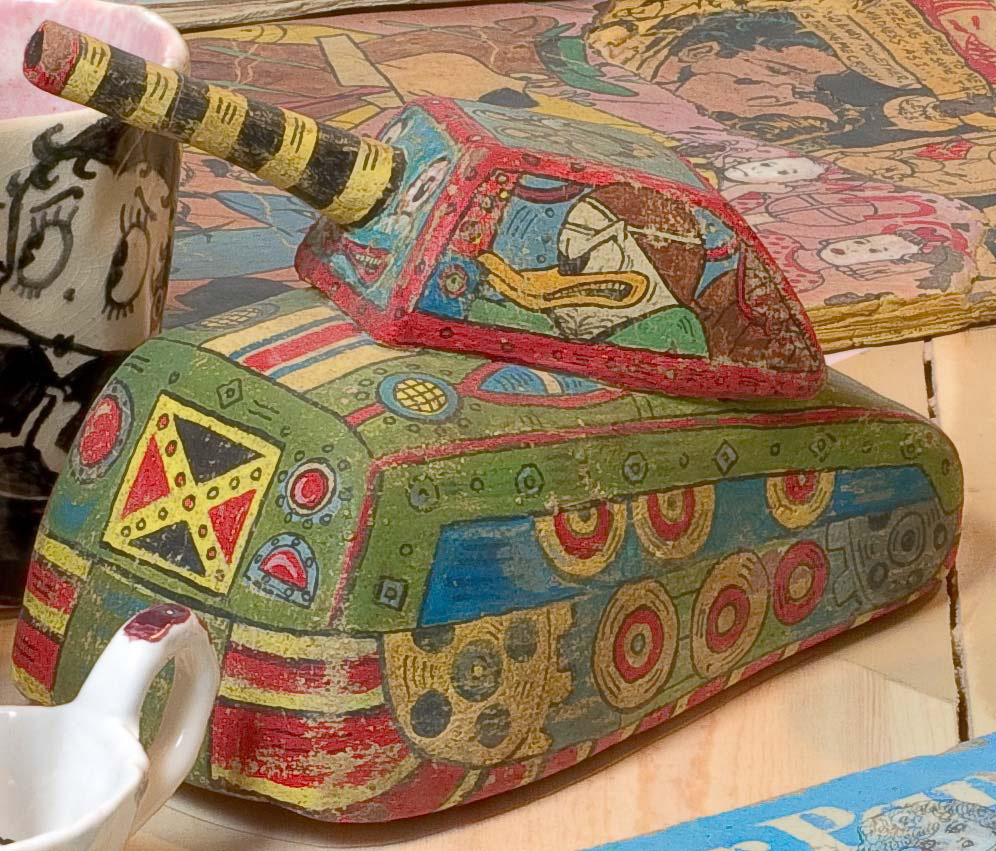Extrastellar Evaluations III: Entropy: 25800
2018 - Film & Video (Film & Video)
16:50 minutes
Yin-Ju Chen
Extrastellar Evaluations is a multimedia installation produced during Yin-Ju Chen’s residency at Kadist San Francisco in the spring of 2016. Chen’s project departs from a 19th century theory popular within Western biogeography that posited the existence of a “lost land” or ancient continent called Lemuria that had sunk beneath the Indian and Pacific Ocean due to cataclysmic geological change. As a result, its inhabitants, the Lemurians, found refuge in Mount Shasta, California. Through a semi-fictional approach, the video component of the installation Extrastellar Evaluations III: Entropy: 25800 envisions a version of history in which the Lemurians lived among humans in the 1960s under the guise of various renowned conceptual and minimal artists (Carl Andre, Mel Bochner, and James Turrell to name a few). The video proposes that humans interpreted and appropriated the geometric-shaped objects the Lemurians created as conceptual and minimalist artworks, when in fact, the objects were transmission devices used to report human actions to their mother planet. Key to understanding the entire installation, the video component takes the form of a channeled message from Adama, High Priest and spiritual leader of the Lemurians. In the video Adama attempts to give viewers clues to decipher the history of the Lemurians, the purpose of their existence on earth, and information about the identities of their agents (artists). The work questions our understanding of our past, while raising consciousness toward our existence on earth. In this context, the installation highlights the risks of human activities, echoing today’s anxieties toward issues of global warming, ongoing conflicts, and exploitation of resources. Addressing earlier signs of humans’ loss of faith in the reality of life, Chen’s work suggests a larger, long-term phenomenon rather than a recent trend linked to the development of media and information technology.
Yin-Ju Chen is a multidisciplinary artist, working in video, photography, drawing, and multi-media installation. She interprets social power and history through cosmological systems, using astrology, sacred geometry, and alchemical symbols to consider themes of human behavior, nationalism, imperialism, racism, state violence, totalitarianism, utopian formations, and collective thinking. Recent works illustrate the inevitability of cycles of history, developing the scope of Chen’s long-term consideration of notions of power and collective (un)consciousness. Chen was in residency at KADIST San Francisco in 2016.
Colors:
Related works featuring themes of: » Film/Video, » United States, » American & Taiwanese

© » KADIST
Jason Meadows
2009The Striation Scrap Lamps (vertical and horizontal) although functioning as utilitarian objects also represent Jason Meadows’s interest in a certain kind of crafted sculpture...

© » KADIST
Kristen Morgin
2008Donald of Doom Tank (2008) is a replica of a vintage metal toy with Donald Duck’s image one side and a soldier on the other...

© » KADIST
William E. Jones
2011In Restaurant, Canton, Ohio (2011), a convenience store offers food, liquor, and Coca Cola to an empty street...

© » KADIST
Jason Meadows
2011Titled afterTruman Capote’s protagonist famously played by Audrey Hepburn in the film Breakfast at Tiffany’s (1961), Holly Golightly (2011) captures the essence of the character: seductive and bold, mysterious and capricious...

© » KADIST
Yoshua Okón
2009Canned Laughter was Okón’s response to an invitation from Ciudad Juárez , Mexico, where artists were asked to create works based on their experience of the city...

© » KADIST
Tuan Andrew Nguyen
2012This work presents the image of an immolated monk engraved on a baseball bat...

© » KADIST
Collier Schorr
1999Collier Schorr’s prints upend conventions of portrait photography by challenging what it means to “document” a subject...

© » KADIST
Oded Hirsch
2012Oded Hirsch’s video work Nothing New (2012) utilizes seemingly absurdist tropes to raise more trenchant questions about communal action and collective identity in modern day Israel...

© » KADIST
John Gutmann
1947Gutmann’s photographs Untitled Nob Hill and From the North Tower of the Golden Gate Bridge are some of the oldest pieces in the Kadist Collection and serve as historical anchors for many of the more recent works...

© » KADIST
Xiaoyun Chen
2014The central point of Vanishing Point is the most direct physiological reaction of the body to the environment...

© » KADIST
Koki Tanaka
2013This artwork was part of a group of projects presented in the Japanese Pavilion at the Venice Biennale in 2013...

© » KADIST
Jason Meadows
2011Jason Meadows’s Do Not Pass Go (2011) depicts Richie Rich, “the poor little rich boy” of the 1950s comic strip...

© » KADIST
Joachim Koester
2007Tarantism is the name of disease which appeared in southern Italy, resulting from the bite of a spider called Tarantula...

© » KADIST
Joachim Koester
2006Physical and mental exploration have been founding elements in Joachim Koester’s research for several years...

© » KADIST
Yee I-Lann
2013Sarcastically titled to call attention to the problematic notions underlying colonialism, this photograph shows hundreds of Native Malaysians seated quietly behind one of their colonial oppressors...





